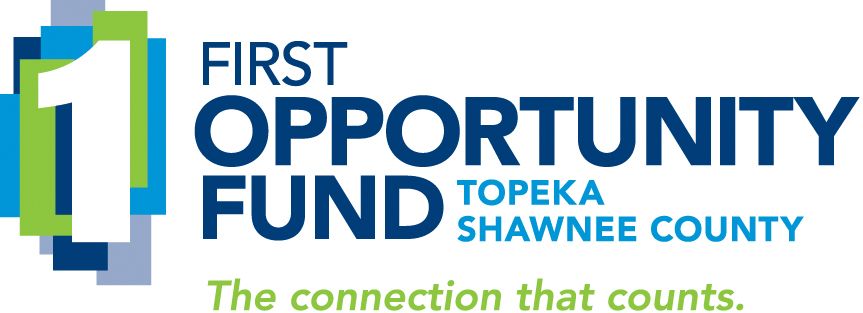
What drives millenial choices of where to live and how they approach sharing living spaces? And how can banks and credit unions better serve them?
A recent survey with the Banktastic National Millennial Advisory Board reveals new insights on how this generation is navigating homeownership decisions—and how lenders must look at things differently.
Homeownership vs. renting: strong aspirations, tough realities
Many see homeownership as a path to stability and financial growth. And the media has made us well aware of barriers such as low inventory, rising costs and millennial debt.
But there’s more for lenders to know if they really want to serve millennials and help them on their homeownership journey.
Why millennials live where they do
Both homeowners and renters cite similar reasons for choosing their current location, though the weight of each factor varies:
- Affordability of housing (54% of renters, 45% of owners)
- Proximity to work or school (47% renters, 55% owners)
- Quality of life (43% renters, 52% owners)
- Proximity to family or friends (40% renters, 38% owners)
- Low crime/safety (23% renters, 39% owners)
Quotes highlight the importance of these factors: “…love being close to family and there is good work for me in the area.”
“Cost of living is reasonable for rent.”
“We live where we do due to my husband’s employment (single-income home); it’s less than a 30-minute commute for him and we’re less than 10 minutes from all the other essentials.”
Other considerations from our millennials on where to live included school quality, political climate and access to public transportation.
Mobility: stay or go?
Millennials are split on whether they want to stay put or move to a more desirable location:
- Among homeowners, 53% prefer to stay, 26% want to move, and 21% are undecided
- Among renters, 39% prefer to stay, 36% want to move, and 26% are undecided
Since renters seem to feel less tethered to their current location, they may represent a broader opportunity for lenders if they can capture the interest of both locals and out-of-towners.
However, about one fourth of existing homeowners express an interest in moving, too. So they can’t be overlooked.
Desire to move is often driven by affordability, job opportunities or wanting to be closer to family and friends. “We don't like the crime or culture where we currently live, and know we can find better paying jobs if we move. We want to be closer to family and the mountains.”
However, many are anchored by existing community ties, school considerations for children or simply satisfaction with their current area: “We like where we live as it’s a good fit for our current life stage as a new family of three.”
What they didn’t talk about: how their living space was vital for working from home or for hybrid setups. Nor did they express big goals of being digital nomads with no mortgage.
Move-in ready vs. fixer upper
When it comes to buying, most homeowner millennials say they prefer move-in ready homes, though nearly 20% are undecided. For non-owners, the undecided contingent rises to 36%.
- Homeowners: 56% prefer move-in ready, 16% fixer-upper, 28% undecided
- Non-owners: 47% prefer move-in ready, 12% fixer-upper, 39% undecided (2% don’t want to buy)
The main reasons for preferring move-in ready are lack of time, energy or skills for renovations. “Turnkey just sounds easier at this point. We’re handy but busy!”
“We have ADHD and would never finish the fixer-upper project,” said another.
Those open to fixer-uppers are motivated by affordability and the ability to customize. “I can get more for my buck and customize a home to my liking,” said one respondent.
Another “prefers a fixer upper, that way I can build it how I want.”
Millennials’ housing choices are driven by pragmatism and community
Millennials overwhelmingly aspire to homeownership, seeing it as a path to stability and long-term investment. Yet, economic barriers keep many in the rental market, some looking for workarounds.
“Buying is one of the reasons I live where I live. More affordable than other parts of the country.”
What some people may find surprising: less than 4% of our board of millennials chose nightlife/entertainment options and cultural alignment as reasons they’ve chosen where they live.
A special consideration for older millennials is their aging parents. One homeowner wrote, “I am figuring out some longer term life issues, including what to do with aging parents that could then mean I am moving to another continent.”
Another said, “We purchased our current home from my grandparents and plan to stay here forever (or until we’re super old and need to downsize). It’s close to our family and friends, it’s where we both grew up and we like it here.”
A renter shared, “I moved back from out of state recently as I wish to be closer to family as I grow older and they do too. I will stay in the general area. I am living with family for now because the cost of housing is extremely expensive where I live. It will allow me to save money in order to buy a home in the future.”
Recent research by AARP says that 14–16% of millennials live with their parents and that 23–25% of all caregivers are millennials—most of whom care for a parent or grandparent—it is reasonable to infer that a substantial subset of those living with parents are doing so for caregiving reasons.
Sharing arrangements: family, friends and co-buying
Living arrangements
- Among homeowners on our board, most live with a spouse/partner, with or without children (84%). Only 1% report having roommates or living with family beyond their immediate household.
- Among renters, arrangements are more varied: 27% live alone, 47% with spouse/partner (with our without children) and 20% with family (parents, grandparents, or other relatives).
Co-buying attitudes
- Homeowners: 25% would consider co-buying with someone other than a spouse/partner, usually for investment or affordability reasons. The majority (75%) are opposed, citing risks to relationships and financial complexity.
- Non-owners: 43% are open to co-buying, often out of necessity or as a way to access the housing market. Many would only do so with trusted friends or family, and often for investment or vacation properties rather than primary residences.
They are mixed in their view of the appeal and the need for caution. “We believe in building up our friends and family alongside ourselves.”
Another said, “We have considered co-buying a property with friends because we can’t afford to buy a place on our own.”
“That is a big financial responsibility to share with someone else and could lead to issues in future if they are not responsible,” warned another.
How banks and credit unions can better support millennials’ home ownership goals
This survey highlights the unique challenges and aspirations of millennials hold about housing. Based on these findings, banks and credit unions have several clear opportunities to better serve this generation.
Financial education is a basic requirement (that they can get on the internet). Bring unique value to millennials by doing more.
1. Address affordability and financing barriers
- Develop home mortgage products with lower down payments or flexible qualification criteria.
- Explore creative lending solutions for buyers with non-traditional incomes.
2. Offer products for co-buying and shared ownership
- Create clear, transparent co-ownership mortgage products and legal resources.
- Provide standardized agreements for co-buying arrangements.
- Consider partnering with local advisors, attorneys, real estate agents and CPAs to provide a unique multi-media education component for millennials investigating this path to homeownership.
- Develop lending solutions for buyers seeking to co-buy with friends or family.
3. Be a go-to for advice on fixer-upper purchases
- Offer renovation loans or bundled financing for buyers who choose this route.
- Partner with local contractors and realtors to provide classroom and hands-on education on “move-in ready” versus “DIY” purchases.
- Research and share grant and tax opportunities for those considering a renovation project. Depending on the area, they could qualify for historic or neighborhood revitalization incentives to help them afford the investment.
4. Fill a need for non-traditional living arrangements
- Develop products for multi-generational households or those with multiple non-spousal co-borrowers.
- Consider flexible underwriting for applicants with shared or pooled incomes.
5. Demonstrate support for renters saving to buy
- Offer high-yield savings accounts or down payment savings programs targeted at future homebuyers.
- Provide credit-building products and financial planning services to help renters prepare for ownership.
By offering financial products and services that recognize millennials’ diverse needs, bank and credit union lenders can play a pivotal role in helping millennials achieve their home ownership goals in a way that fits their own requirements instead of trying to fit into what previous generations wanted.
For more insights about millennials and their financial lives, read our article, The role of financial influencers: Millennials' trust and skepticism of these personalities.
If you'd like help with marketing to millennials for your bank or credit union, contact Martha Bartlett Piland, CFMP at 785-969-6203 or by
photo credits: house collage by Ruliff Andrean, fuses by Chad Stembridge and home with credit meter by Philip Oroni on Unsplash
























